![]()
![]()
![]()
Use LEFT and RIGHT arrow keys to navigate between flashcards;
Use UP and DOWN arrow keys to flip the card;
H to show hint;
A reads text to speech;
155 Cards in this Set
- Front
- Back
- 3rd side (hint)
|
Animal Welfare board of India |
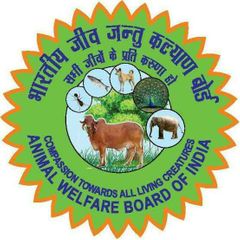
✏Statutory ✏Founded by Rukmini Devi Arundale in 1962 ✏Earlier in Chennai now in 2018 shifted to Fridabad dist,Haryana ✏Estd U/Prev to cruelty to animl act 1960 |
|
|
|
Central Zoo Authority |
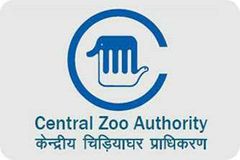
✏Statu. U/WPA 1972 ✏Responsible for oversight of Zoo's. |
|
|
|
National Biodiversity Authority |
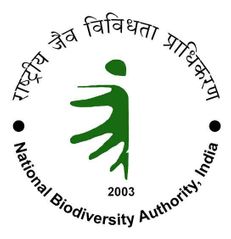
✏Statutory and Autonomous U/Biolog div act 2002 ✏Founded in 2003 |
|
|
|
Wildlife crime control bureau |
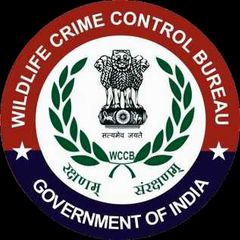
✏Statu U/WPA 1972 ✏To combat wildlife crime ✏Estd in 2006, operating since 2008 ✏Motto : Fighting transboundary Env crimes |
|
|
|
National Ganga River basin Authority |
Statu U/EPA 1986 Chaired by PM |
|
|
|
Wildlife Institute of India |
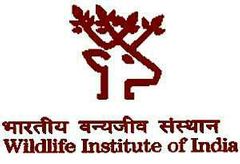
Non-Statutory Estd @Dehradun in 1982 Got Status of Autonomous insti of MoEFCC in 1986 |
|
|
|
Central Pollution Control Board |
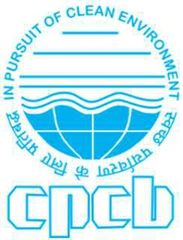
Statu u/Water(prev and control of Pollu) Act 1974 Also entrusted wid Pow n Functn U/Air (P&CP) act 1981 |
|
|
|
National Tiger Conservation Authority |
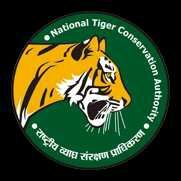
✏Statutory, Estd in 2006 on recomm of Tiger Task Force constitu by the PM. ✏perf functn as provdd in WPA 1972. ✏Chairman is Minister of MoEFCC. ✏for reorg. of Project Tiger and Tiger reserves in India. |
|
|
|
Wildlife Trust of India |
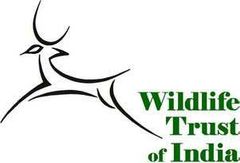
✏NGO, founded in 1998 ✏Hq. Noida ✏Mandate: to conserve wildlife and its habitat and to work for the welfare of individual wild animals. |
|
|
|
International Fund for Animal Welfare |
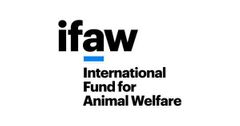
✏NGO founded by Brian Davies, loc@ Massachusetts, USA. ✏one of the largest animal welfare and conservation charities in the world. ✏works to rescue individual animals, safeguard populations, preserve habitat, and advocate for greater protections. |
|
|
|
Bombay Natural History Society |

-NGO founded in 1883 @ Mumbai -Partner of Birdlife International in India -engaged in conservation and biodiversity research. -designated as a 'Scientific and Industrial Research Organisation' by the DoS&T -will conduct Flamingo count. -Asian waterbird census is jointly coordinated by BNHS and wetlands international. |
|
|
|
Birdlife International |

✏INGO, Global partnership of Conser org.(W's Largest wid 121partnr org, one per country or territory) ✏Estd in 1922, Global office @Cambridge,UK. ✏To conserve birds and their habitat and Global biodiversity.
✏Official listing authority for Birds in IUCN's Red List. ✏runs Forest Hope prog to prev desertification, prot trees and restore natural forest in tropics.
|
|
|
|
Mission Blue |

✏NGO, Chrd and Dirctr -Sylivia Earle ✏To estd marine prot area called Hope spots worlwide. ✏Hope spots r spc plces that r critcl to the hlth of Ocean- Earth's Blue Heart ✏A&N declared as Hope spot.
|
|
|
|
Earth Hour |
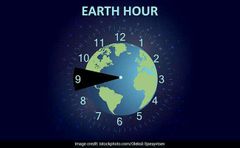
✏Worldwide movement by WWF for nature. ✏Annual event, encouraging indiv, commu, and Busnss to turn off non essential electric lights for 1hour, from 8.30 to 9.30 pm on specifc day towards the end of March as a symbol of commitment to the planet. |
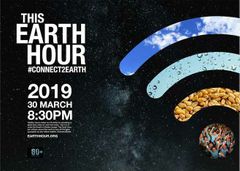
|
|
|
WWF-N |
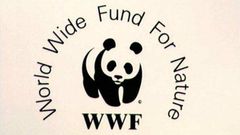
✏INGO, 1961, Hq. Gland,Swtzld ✏Wilderness preservation and the reduction of human impact on ENV. ✏Living planet report,biennial. ✏currently works in 6 Areas: food, climate, freshwater, wildlife, forests, and oceans.
|
|
|
|
Biofuel watch |
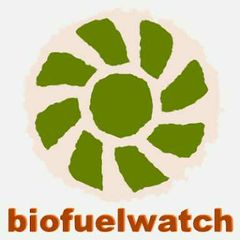
NGO based in UK and USA To raise awareness of the negative impact of industrial biofuels and bioenergy. |
|
|
|
Biodiversity International |
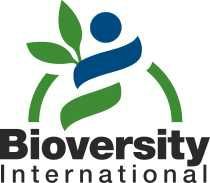
✏Not fot profit research-for-developement. ✏Hq. Rome, italy, formed in 1974. ✏Vision: Agricultural biodiversity nourishes the people and sustain the planet.
|
|
|
|
Conservation International |
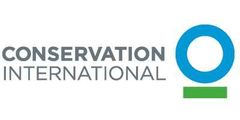
✏American non profit env org ✏Hq. Arlington, Virginia ✏To protect nature as source of food, fresh water, livelihood and stable climate.
|
|
|
|
Wetlands International |
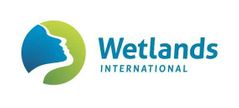
-Formed in 1937. -Independent, Not for Profit, global organization, supported by government and NGO membership around the world. -works to sustain and restore wetlands and their resources for people and biodiversity. |
|
|
|
Centre for Science and Environment |
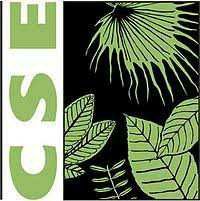
Founder: Anil Agrawal Not for profit, public interest research organization in New Delhi. received Indira Gandhi Peace Price in 2018. |
|
|
|
Global Green Growth Institute |

-Treaty based Intergovernmental, International Organization based in Seoul, South korea. -To promote green growth, a growth paradism that is characterized by a balance of Economic Growth and Environmental Sustainability. |
|
|
|
Compensatory afforestation Fund Management and planning Authority(CAMPA) |
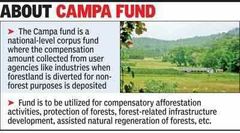
✏To promote afforestation and generation activities as a way of compensating for forest land diverted to non forest uses. |
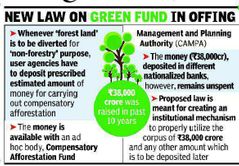
|
|
|
National Green Tribunal |

✏U/NGT act 2010 ✏For effective and expeditious disposal of cases related to environmental protection and conservation of forest. ✏Specialized body guided by Principle of Natural Justice(not by CPC 1908), mandated to dispose cases Within 6 month ✏both Judi and Non judi membrs, chaird by serving/rtd. J of SC or Serv/rtd CJI of HC.
|
|
|
|
TRAFFIC |

INGO, founded in 1976 as stategic Alliance of WWF and IUCN. Located at Cambridge, UK. Working globally on trade in wild animals and plants in context of both biodiv and Sust dvp. |
|
|
|
CITES(Convention on International Trade in Endangered Species of Wild Fuana and Flora) |
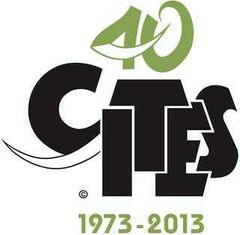
✏Also, known as "WASHINGTON CONVENTION". ✏Multilateral traty to protect endangered plant and animals. ✏Drafted as result of resolution adopted in 1963 at a meeting of IUCN. ✏In Effect since 1975, located at Washington DC, USA |
|
|
|
UNEP |
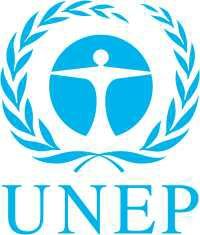
✏UN agency ✏Coordinates the organization's environmental activities and assist developing countries in implementing environmentally sound policies and practices. ✏Hq. Nairobi, Kenya ✏founded by Maurice Strong, its first director, at Stockholm Conference in June 1972. |
|
|
|
International tropical timber organization |

✏Intergovernmental organization founded at Yokohama, Japan in 1986. ✏Promotes conservation of tropical forest resources and their sustainable management, use and trade. |
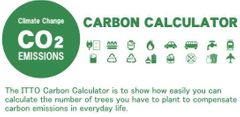
|
|
|
Coalition Against wildlife trafficking |

✏Established in 2005 by U.S State Department as a voluntary coalition currently include group of 13 governments, 21 NGO's and Industry representative to combat illicit wildlife trafficking by stimulating political will, improving law enforcement and resource consumer demand. Disbanded currently |
|
|
|
South Asia Wildlife Enforcement Network(SAWEN) |
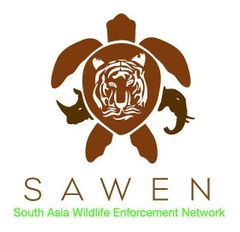
✏intergovernmental organization wildlife law enforcement support body of 8 south Asian countries, formed in 2011 at Paru, Bhutan. ✏Secretariat at Kathmandu, Nepal. Members: Pak Afghn India Nepal Maldives Bhutan Bagla Sri Lanka |

PAIN MBBS |
|
|
IUCN |
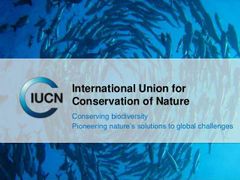
✏Membership union consist of both govt and civil society. ✏It provides public, private and NGOs with knowledge and tools that enable Hum. prog., eco. dvp. and nature conser. to take place together. ✏IUCN world Congress held once in 4 yrs, for 2020 in France. |
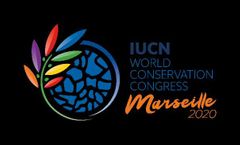
Publications : ✏Redlist for thrtn spces ✏Redlist for eco s/m ✏World Heritage Outlook ✏World database of Key Biodiversity Areas.(Birlfe Internat +IUCN) ✏World database on protected areas(UNEP+IUCN)
|
|
|
International whaling commission |

Global body charged with conservation of whales and management of whaling. Estd in 1946, Hq. Impington, UK India member (89 members) |
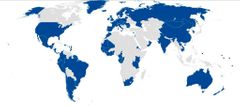
|
|
|
Intergovernmental panel on Climate Change |

✏Intergovernmental body of UN ✏Dedicated to provide world with an objective, scientific view of Climate change, its Natural, Pol and Econo impact and possible response options. ✏Estd in 1988 by WMO and UNEP and later endorsed by UNGA ✏Membership open to all UN and WMO members. ✏so far 5 assessment report came, 5th was in 2015, 6th will be in 2022. ✏spcl rep on glob. Warm of 1.5°C (SR15) pub by IPCC on Oct,8, 2018. - said 1.5 ° C target is possible but need deep emissions reductions |
|
|
|
UNCCD(UN conv to Combat Desertification) |

✏signed in 1994 at Bonn, Germany. ✏196mem+EU. ✏Sole legally binding International agreement linking env and dvp to sustainable land management. ✏Covers all drylands areas. ✏COPs held bienially, last in China 2017, Next Will be at New Delhi 2019. ✏Ankara initiative(COP12) and Changwon initiave(COP10). |
|
|
|
FAO |

✏Specialized agency of UN estd in 1945 that leads International effort to Hunger. ✏Hq. Rome, Italy ✏Parent org is UNECOSOC Publications: ✏State of World Fisheries and Aquaculture(SOFIA). ✏SoW's Forest(SOFO). ✏SoFood sec and Nutri in the World(SOFI) ✏SoFood and Agri(SOFA) SoAgri commodity Markets(SOCO). |
Kaam krke ROMROM dard krta h Kisan ka. |
|
|
Environmental Treaties👉 |
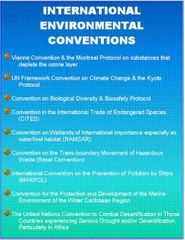
|
|
|
|
Ramsar Convention |
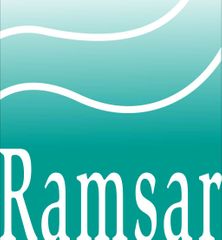
✏For Conservation and Sustainable use of Wetlands. ✏Signed in Ramsar,Iran in feb,2,1971( came into effect in 1975) ✏Need min 7 ratification to be able to come into force. ✏Maintains Montreux Record. |
|
|
|
Environmental Treaties👉 |
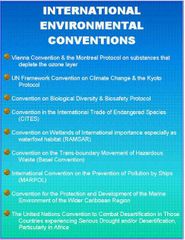
|
|
|
|
Stockholm Declaration |

1972, UN conf on the Human Environment. |
|
|
|
Wolrd Heritage convention |
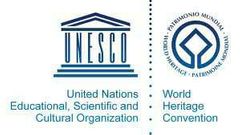
✏adopted by UNESCO General Conference at its 17th session in Paris on 1972. ✏to promote cooperation among nations to protect heritage around the world that is of such outstanding universal value that its conservation is important for current and future generations. |
|
|
|
CITES |
✏Washingtonn convention, 1973 ✏Legally Binding
|
|
|
|
Bonn Convention |
1979. Treaty U/UNEP. Convention on migratory species. |
|
|
|
Nairobi Declaration |
1982, Sustainable Development |
|
|
|
Vienna Convention for the protection of Ozone layer |
1985, Not legally Binding |
|
|
|
Montreal Protocol |
✏Protocol on substances that deplate ozone layer. ✏Legally binding. |
|
|
|
Bruntland Report |
1987, Sustainable Development |
|
|
|
Basel Convention |
✏1989, ✏On control of transboundary movement on hazardous wastes and their disposal. ✏Doesn't deal with radioactive waste. |
|
|
|
UN Conference on Environment and development (UNCED) |
✏1992, ✏Held in Rio de Janeiro, Brazil, also called "Earth Summit". ✏Agenda 21 was Published for Sustainable Development. ✏Non-binding. ✏Also called Rio declaration. |
|
|
|
UNFCCC |
✏1992 ✏Adopted before Earth Summit and opened for signature in Earth Summit. ✏Obj to stabilize GHGs conc in the Atm at a level that would prevent dangerous anthropogenic interference with the climate s/m. ✏Non binding limits on GHGs emission for individual countries and contain no enforcement mechanism. ✏Loc in Bonn, Germany ✏Into force in 1994. |
|
|
|
Convention on biological diversity(CBD) |
✏1992 ✏Legally binding ✏Opened for signature in Earth Summit ✏4th COP of CBD was held in Sharm-El-Sheikh, Egypt. ✏Global biodiversity |
|
|
|
Kyoto Protocol |
✏1997, ✏U/UNFCCC ✏Legally Binding ✏Principle of Common but Differenciated responsibilities(CBD) 1st GHG reduction commitment for annex I countries ended in 2012. ✏Second commitment started in 2012 at Doha. ✏International emissions trading scheme, clean development mechanism and Joint implementation. ✏GHGs under it: CO2, CH4, Sulphur Hexafloride, Nitrous oxide, HFCs and PFCs. |
|
|
|
Rotterdam Convention |
✏1998 ✏Convention on prior inform consent (PIO) procedure for certain hazardous chemicals and pesticides in international trade. .
|
|
|
|
Aarhus Convention |
✏1998 ✏Convention on access to information, public participation in decision making and access to justice im environmental matters. |
|
|
|
Stockholm Convention |
✏2001, ✏Convention on Persistent organic pollutants(POP). ✏Dirty Dozens: Aldrine, Chlordane, DDT, Dieldrin, Endrin, Heptachlor, Mirex, Toxaphene, Hexachlorobenzene, Polychrorinated Biphenyl, Dioxins and Furans. |
|
|
|
Plant Treaty/Internationa Seed Treaty/ Int trty on plnt gentic resou for Food and agri.(IT PGRFA). |
✏2001. ✏Aims at recognising the enourmous contribution of farmers to the diversity of crops that feed the world. |
|
|
|
Kiev Protocol |
2003, On strategic environment assessment. |
|
|
|
Nagoya Protocol |
✏2010, ✏Access to genetic resources and the fair and equitable sharing of benefits arising from their utilization to the convention on Biodiversity. |
|
|
|
Rio+20 |
2012, Sustainable Development |
|
|
|
Minamata convention |
2013, Protection from mercury pollution |
|
|
|
Paris agreement (UNFCC COP21) |
✏2015 ✏Non legally binding ✏INDC ✏Reduction of GHGs emissions. |
|
|
|
Kigali Amendment |
✏2016, ✏Amends Montreal Protocol 1987, to achieve the commitments of the Paris Agreement to keep global warming under check, this agreement aims to phase out the use of HFCs by 2040. ✏Legally Binding ✏HFC is a GHGs and not an ozone depleting substance. |
|
|
|
New Urban Agenda- Habitat III |
✏2016 ✏Held in Ecuador at UN conf on housing and sustainable development. ✏Held once in 20 yrs ✏A new framework that lays out how cities should be planned and managed to best promote sustainable urbanization. |
|
|
|
Climate Change and Pollution Initiative👉 |

|
|
|
|
Climate investment funds (CIF) |
Funds and programs under this are administered by World bank |
|
|
|
UN – REDD(United Nations Programme on Reducing Emissions from Deforestation and Forest Degradation) |
✏collaboratve prog of FAO, UNDP and UNEP ✏administered by UNDP ✏created in 2008 in response to the UNFCCC decisions on the Bali Action Plan and REDD at COP-13. |
|
|
|
Adaptation fund |
administered by adaptation fund board under Kyoto protocol. World bank is the trustee on an interim basis. |
|
|
|
MDG Achievement fund |
– administered by UNDP |
|
|
|
Biocarbon fund |
forest carbon partnership facility, partnership for market readiness – administered by world bank |
|
|
|
India’s INDC |
✏reduction in the emissions intensity of its GDP by 33 to 35 per cent by 2030 from 2005 level. ✏To create an additional carbon sink of 2.5 to 3 billion tonnes of CO2 equivalent through additional forest and tree cover by 2030. |
|
|
|
BSE Greenex |
✏ India’s first carbon efficient live index. It has been developed by BSE and IIM |
|
|
|
National ambient air quality standards (NAAQS) |
✏measures sulphur dioxide, nitrous oxide, PM 10, PM 2.5, Ozone, Lead, Carbon monoxide, Arsenic, Nickel, Benzene, Ammonia and Benzopyrene. |
|
|
|
National air quality index |
✏measures PM 10, PM 2.5, Nitrous oxide, Sulphur dioxide, Carbon monoxide, Ozone, Ammonia and Lead. |
|
|
|
Breathe India |
✏15-point formula proposed by NITI Aayog to combat air pollution. |
|
|
|
World Air quality report |
✏by Greenpeace international and IQ Air visual |
|
|
|
The first-ever Global Conference on Air Pollution and Health |
✏by the WHO with participation of UNFCCC. |
|
|
|
The Talanoa Dialogue |
✏is a process designed to help countries implement and enhance their Nationally Determined Contributions by 2020. ✏launched at COP 23 under the Presidency of the Republic of Fiji, and was a year-long process that will was discussed at COP 24 in Katowice, Poland. |
|
|
|
Climate change performance index |
✏by Germanwatch and climate action network Europe. |
|
|
|
SAFAR (System of air quality and weather forecasting) |
✏Launched in New Delhi ✏dvp by Indian Institute of Tropical Meteorology, Pune and operationalized by India Meteorological Department (IMD). ✏monitor all weather parameters like temperature, rainfall, humidity, wind speed and wind direction. ✏PM2.5, PM10, Sulfur Dioxide, Ozone, Nitrogen Oxides, Carbon Monoxide, the system will also monitor the existence of Benzene, Toluene and Xylene. ✏will also track UV-Index, PM1, Mercury and Black carbon in real time. |
|
|
|
WAYU |
✏developed by (CSIR-NEERI) ✏funded by DoS&T ✏Device can purify air in an area of 500m ✏works on two principles mainly Wind generation for dilution of air pollutants and Active Pollutants removal. ✏Consist two UV lamps and half kg of activated carbon charcoal coated with special chemical Titanium Dioxide. |
|
|
|
Centre for Science and Environment (CSE) |
✏a New Delhi-based think tank has released a report titled “The urban Commute”. |
|
|
|
MoEFCC and World Bank |
✏recently released a joint report on forest fires in India. |
|
|
|
Black Carbon |
✏Chemically, black carbon is a component of fine particulate matter. ✏Black carbon consists of pure carbon in several linked forms. ✏It is formed through the incomplete combustion of fossil fuels, biofuel, and biomass. ✏ Black Carbon (BC) has recently emerged as a major contributor to global climate change, possibly second only to CO2 as the main driver of change. |
|
|
|
"Keep Cool and Carry on” |
✏Theme of 24th World Ozone Day : Montreal Protocol |
|
|
|
State of the global climate report Greenhouse gas bulletin |
✏WMO |
|
|
|
Clear air Indian ring |
✏launched during the visit of Prime minister of Netherlands in Delhi. |
|
|
|
Composite water management index |
✏NITI Aayog. |
|
|
|
India has planned to phase out single use plastic completely by ? |
✏2022 |
|
|
|
CleanSeas campaign |
✏ by UN Environment (UNEP) ✏to eliminate major sources of marine litter, micro-plastics in cosmetics and the excessive, wasteful usage of single-use plastic by the year 2022. |
|
|
|
Emissions gap report |
✏UNEP. |
|
|
|
REDD+ |
✏is a voluntary climate change mitigation approach that has been developed by Parties to the UNFCCC. ✏ It aims to incentivize developing countries to reduce emissions from deforestation and forest degradation, conserve forest carbon stocks, sustainably manage forests and enhance forest carbon stocks. |
|
|
|
The Global Environment Facility |
✏ estd in 1992 Rio Earth Summit ✏to help tackle our planet’s most pressing environmental problems. ✏first assembly in India in 1998 and the latest (6th) in Vietnam in 2018. ✏provides financial mechanism for CBD, UNFCCC, Stockholm convention, Minamata convention and UNCCD. ✏Resource framework allocation (RAF) and System for transparent allocation of resources (STAR) are its other initiatives. |
|
|
|
Project Tiger |
✏State govts notify the tiger reserves on the recommendations of NTCA. ✏cen spon schm ✏It notifies core area and buffer zones. ✏launched in 1973 in Jim corbett National park. ✏Caspian tiger, Bali tiger and Java tiger are extinct. ✏The species which are alive are Bengal tiger, Amur tiger, South china tiger, Sumatran and Malayan tiger, Indo-Chinese tiger. |
|
|
|
Project elephant(PE) |
✏Laun 1993. ✏PE has been formally implementing MIKE (Monitoring of Illegal Killing of Elephants) programme of CITES in 10 ERs since January 2004. |
|
|
|
Asia’s first Gyps vulture reintroduction programme |
✏laun in Haryana at Jatayu conservation breeding centre in Pinjore. |
|
|
|
Indian Rhino Vision 2020 |
✏Launched in 2005 ✏ambitious effort to attain a wild population of at least 3,000 greater one-horned rhinos spread over seven protected areas in the Indian state of Assam by the year 2020. ✏IRF has partnered with the Assam Forest Department, the Bodoland Territorial Council, the World Wide Fund for Nature (WWF), and the US Fish & Wildlife Service to address the threats facing Indian rhinos. |
|
|
|
Sea turtle project |
✏for the conser of olive ridley turtles. ✏imple by MoEFCC in collab with UNDP and WII. |
|
|
|
Crocodile conservation project |
✏for Gharial and Mugger species. |
|
|
|
Project Hangul |
✏state animal of J&K. ✏Dachigam national park. ✏supported by IUCN and WWF. |
|
|
|
Banni grassland |
Gujarat. |
|
|
|
Nalbana bird sanctuary |
✏In core area of Chilika lake. |
|
|
|
Barasingha(Swamp deer) |
✏state animal of MP. ✏Vulnerable by IUCN. |
|
|
|
Black necked crane . |
✏Arunachal Pradesh |
|
|
|
Chiru (Tibetan antelope) |
✏ hunted for making shahtoosh wools. |
|
|
|
Nilgai also known Bluebuck |
✏largest Asian antelope. |
|
|
|
Galapagos islands |
✏banned firecrackers. |
|
|
|
Lake Urmia |
✏saltwater lake in Iran |
|
|
|
The largest accumulation of ocean plastic in the world |
✏between Hawaii and California |
|
|
|
Siesmic airguns |
✏used for oil and gas exploration under water. |
|
|
|
Safe Water Releaser (SWAS), Safe Thermite Cracker (STAR) and Safe Minimal Aluminium (SAFAL). |
✏Green Crackers. ✏dvp by CSIR and NEERI. ✏release water vapour or air as dust suppressants. |
|
|
|
Global environment outlook |
✏by UNEP |
|
|
|
International coral reef initiative (ICRI) |
✏declared 2018 as the international year of the reef. ✏govt of Lakshadweep and ZSI organized a conference on the status and protection of coral reefs (STAPCOR) 2018 and the theme was “Reef for life”. |
|
|
|
Kubuqi desert |
Mongolia. |
|
|
|
UNGA declared 2010 to 2020 ?? |
✏the United Nations Decade for Deserts and the Fight Against Desertification. |
|
|
|
‘The New Delhi Declaration on Asian Rhinos 2019' |
✏India,Bhutan, Nepal, Indonesia and Malaysia for the conservation and protection of the species at the recently held Second Asian Rhino Range Countries meeting here. |
|
|
|
India’s first district cooling system |
Amravati, Andhra Pradesh. |
|
|
|
The first-ever vulture and raptor survey |
Wayanad Wildlife Sanctuary. |
|
|
|
The first International conference on sustainable water management |
✏recently organized in India. |
|
|
|
Palau is looking forward to ban |
sunscreen products. |
|
|
|
Sundarbans |
✏declared as a Ramsar site. (1st feb 2019, 27th site, site no 2370) |
|
|
|
River Mahanadi |
✏flows in Satkosia Tiger reserve. |
|
|
|
Kole wetlands |
✏Kerala. |
|
|
|
Endangered Amami rabbits |
✏ Japan. |
|
|
|
Black soft-shell turtle |
✏ classified as extinct in the wild and are being bred in Assam. |
|
|
|
Crying snake |
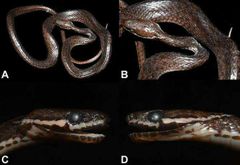
Arunachal Pradesh. |
|
|
|
Mysticellus franki is a narrow-mouthed frog, |
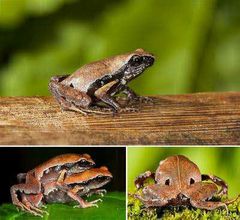
Kerala. |
|
|
|
Kelp Forests |
✏underwater ecosystems formed in shallow water by the dense growth of several different species known as kelps. ✏Though they look very much like plants, kelps are actually extremely large brown algae. |
|
|
|
SDG India index |
✏by NITI Aayog in collaboration with MoSPI, Global green growth Institute and UN in India. ✏Tamil Nadu is the top ranked state. |
|
|
|
GoI-UNSDF 2018-2022 outlines the work of UN agencies in India |
✏to support the achievement of key development outcomes. ✏The NITI Aayog is the national counterpart for the UN in India ✏seven priority : 1. Poverty and Urbanization; 2. Health, Water, and Sanitation; 3. Education and Employability; 4. Nutrition and Food Security; 5. Climate Change, Clean Energy, and Disaster Resilience; 6. Skilling, Entrepreneurship, and Job Creation; and 7. Gender Equality and Youth Development. |
|
|
|
Champions of Earth |
✏Highest environmental award by the UN. ✏launched in 2005 by UNEP. ✏awarded jointly to PM Modi and French president for launching international solar alliance |
|
|
|
Chandrabhaga beach |
✏Odisha ✏Odisha ✏is the first to receive Blue flag certification in Asia. ✏The tag is given to environment-friendly and clean beaches, equipped with amenities of international standards for tourists. ✏is the first to receive Blue flag certification in Asia. ✏The tag is given to environment-friendly and clean beaches, equipped with amenities of international standards for tourists.
|
|
|
|
world’s first sovereign blue bond. |
✏by Government of Seychelles |
|
|
|
Private Conservancy Rules |
✏ by Karnataka ✏to increase forest area through private land. ✏ anyone who has a minimum of 100 acres of land bordering a national park can convert it to a “Wildlife Private Conservancy”. ✏5% land buildings for ecotourism; the rest has to be kept for flora and fauna. ✏it received criticism. |
|
|
|
Species recovery programme |
✏ It is a part of Integrated development of wildlife habitats. ✏Asian wild buffalo, Asiatic lion, Sangai, Dugong, Edible nest swiftlet, Gangetic dolphin, GI bustard, Hangul, Indian rhino, Jerdon’s courser, Malabar civet, Marine turtles, Nicobar megapode, Nilgiri Tahr, Snow leopard, Swamp deer, Vultures, Red panda, river terrapin, Clouded leopard, Arabian sea humpback whale. |
|
|
|
Global Geoparks status |
✏By Geological Survey of India ✏Lonar Lake in Maharashtra and ✏St. Mary‘s Island and Malpe beach in coastal Karnataka. |
|
|
|
Singphan wildlife sanctuary |
✏Nagaland ✏declared as Elephant reserve. |
Ajay devgan chya mishya Naga sarkya hayy ani to Hatti sarkha zala. |
|
|
Salicornia |
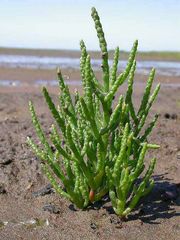
✏a plant that grows in salty marshes in the mangrove wetlands, of AP ✏to tap commercial benefits from the plant through cultivation as well as extraction of the substitute to salt with low sodium content. |
|
|
|
International solar alliance |
✏Bolivia became the 74th country to sign for ISA ✏ is the first treaty based international intergovernmental organization located in India. |
|
|
|
India’s cooling action plan |
✏for 2018 to 2038: ✏To reduce cooling demand across sectors by 20% to 25%. |
|
|
|
Peatlands |
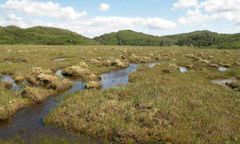
✏Covering 3% of the global land surface. ✏The term 'peatland' refers to the peat soil and the wetland habitat growing on its surface. ✏Peat is the accumulation of partially decayed vegetation or organic matter. ✏UN Environment assembly adopted its first ever resolution on peatlands, recently. ✏(DRC)Congo Basin, the world’s largest tropical peatlands, from unregulated land use and prevent its drainage and degradation. ✏Brazzaville declaration(bet DRC,RC and Indonesia) that promotes better management and conservation of this globally important carbon store. |
|
|
|
Administrative control and matters concerning cow shelters |
✏transferred , from MoEF&CC to Ministry of Agriculture and Farmer’s Welfare. |
|
|
|
GAJ Yatra |
✏GAJ Yatra is a nationwide campaign to protect elephants. ✏led by Wildlife trust of India and IFAW in Meghalaya. |
|
|
|
EnviStats India 2018. |
✏MoSPI |
|
|
|
Uttarkhand High court |
✏declared the entire animal kingdom as legal entities. |
|
|
|
Idu Mishmi tribe |
✏Arunachal Pradesh. |
|
|
|
India biodiversity award |
✏by National biodiversity authority. ✏started in 2012 in partnership with UNDP. ✏for bugun village community reserve management committee for conservation of Bugun Liocichla bird. |
|
|
|
Rat hole mining |

✏in Meghalaya. |
|
|
|
A real time landslide warning system |
✏Sikkim-Darjeeling belt of North East Himalayas. |

|
|
|
Earth’s geological history |
✏4.5 billion years ✏is divided up into various units including eons, eras, periods, epochs, and ages. ✏Scientists have just assigned three new ages to the Holocene, which is the current epoch in which we live. ✏most recent age the Meghalayan, which began 4,200 years ago during a worldwide megadrought. |
|
|
|
Madras High court |
✏first to set up a environmental fund. |
|
|
|
GRIHA – Green rating for integrated habitat assessment |
by TERI and MoNRE |
Tere ghar jaane ka mnre😇. |
|
|
Project Sunrise |
✏collab between India and UK to deliver low cost photovoltaics to rural India. |
sUnrIse🌅 |
|
|
YS Malik panel |
✏sub repo to NITI Aayog ✏to aid car manufacturers to switch from IC Engines to Electric vehicles. |
Yasin n Niti were kissing in a Tesla electric car, 💕🕵 |
|
|
Regulatory indicators for sustainable energy (RISE) |
✏ World bank. |
Wo Bus RISE khate🤓 |
|
|
National policy of biofuels 2018 |
✏categorises biofuels as "Basic Biofuels". ✏1G- crops. ✏2G- non-food crops. ✏3G- algae and microalgae. ✏4G- fuel:non-arable land. ✏not require destruction of biomass to be converted to fuel. ✏ This technology aims at directly converting available solar energy to fuel using inexhaustible, cheap and widely available resources. They (photobiological solar fuels and electrofuels) are the most advanced biofuels currently under research. Only inputs to get feedstock is CO2 and water. |
|
|
|
The Global energy and CO2 report |
✏International energy association. |
|
|
|
Energy transition index |
✏World economic forum. |
|

